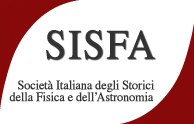Speaker
Description
In the past century programs of research for unifying science (Hilbert, neo-positivists, physicalists) were born. Many scholars pursue the goal of a “Theory of Everything”. They have to prove the reduction of theories insisting on the same field of phenomena. On the other hand, historians and philosophers of science introduced the notion of a mutual incommensurability of two theories when their basic notions have radical variations in meanings and hence their relations are difficult to be established. A great debate was born about this notion of reduction, questioning even whether in the history of physics it ever occurred.
A specific notion of reduction is the physicist’s one: two theories are reduced by a mathematical limit process on a parameter. E.g. a common opinion is that classical mechanics on the one hand and special relativity and quantum theory on the other are reduced by taking such a limit respectively for c and h. However, some scholars (Berry, Batterman), owing to the singularity of this limit in many cases, obtained several impossibility results (e.g. the reduction of ray optics to wave optics). This fact supports Rohrlich’s suggestion of an essential pluralism of physical theories.
The communication offers a review of the past contributions on mathematical reduction. The debate on the results is summarized.
Bibliography
Batterman R.W., 2002, The Devil in the Details: Asymptotic Reasoning in Explanation, Reduction, and Emergence. Oxford UP.
Berry M.V., 2001, “Chaos and the Semiclassical Limit of Quantum Mechanics”, in Quantum Mechanics: Scientific perspectives on divine action, R.J. Russell et al (eds), Vatican Observatory CTNS publications, pp. 41–54.
Nagel E., 1961, The Structure of Science, London: Routledge and Kegan Paul.
Nickles T., 1973, “Two concepts of intertheoretic reduction”, The Journal of Philosophy, 70: 181.
Rohrlich F., 1988, “Pluralistic ontology and theory reduction in the physical sciences”, The British Journal for the Philosophy of Science, 39: 295.

